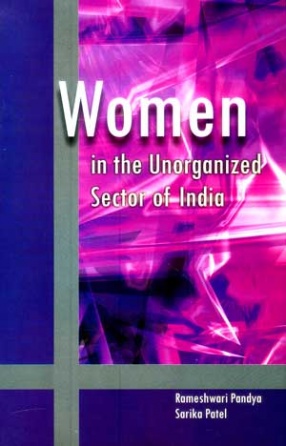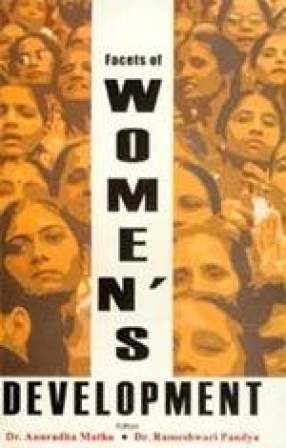Women in the Unorganized Sector of India: Including a Case Study of Women in the Embroidery Industry in Surat City
Synopsis
According to the final report of the National Commission for Enterprises in the Unorganized Sector (NCEUS) released in April 2009, workers in the unorganized (or informal) sector constitute more than 93 percent of the total workforce of India. Unorganized sector workers are those who do not have any job security, income security or social security and are therefore extremely vulnerable to exogenous shocks.
The problems of women workers in general and in the unorganized sector in particular deserve special emphasis and focus in view of their marginalized position within the class of workers. Even when women are not employed in the sense of contributing to the national output, a considerable share of their time in consumed by socially productive and reproductive labour. This is what is called the double burden of work that distinguishes women for men.
A number of national and international studies have documented the sex-typing of jobs and occupations by women. Sexual division of labour has implications for the wages earned. Permanency in the job and the possibilities for upward mobility in the industry. The overall picture that emerges is one of greater disadvantage for women workers in general and those belonging to rural as well as Scheduled Caste/ Scheduled Tribes in particular.
This book deals with the problems of women in the unorganized sector of India. The policies and programmes of the Government to address these problems are also discussed. Importantly, it includes a case study of women in the embroidery industry of Surat city of the Indian state of Gujarat.
Read more
The problems of women workers in general and in the unorganized sector in particular deserve special emphasis and focus in view of their marginalized position within the class of workers. Even when women are not employed in the sense of contributing to the national output, a considerable share of their time in consumed by socially productive and reproductive labour. This is what is called the double burden of work that distinguishes women for men.
A number of national and international studies have documented the sex-typing of jobs and occupations by women. Sexual division of labour has implications for the wages earned. Permanency in the job and the possibilities for upward mobility in the industry. The overall picture that emerges is one of greater disadvantage for women workers in general and those belonging to rural as well as Scheduled Caste/ Scheduled Tribes in particular.
This book deals with the problems of women in the unorganized sector of India. The policies and programmes of the Government to address these problems are also discussed. Importantly, it includes a case study of women in the embroidery industry of Surat city of the Indian state of Gujarat.
31.50
28.35
$
35.00 $
Free delivery Wolrdwidе in 10-18 days
Ships in 1-2 days from New Delhi
Membership for 1 Year $35.00
Get it now and save 10%
Get it now and save 10%
BECOME A MEMBER











Bibliographic information
Sarika Patel